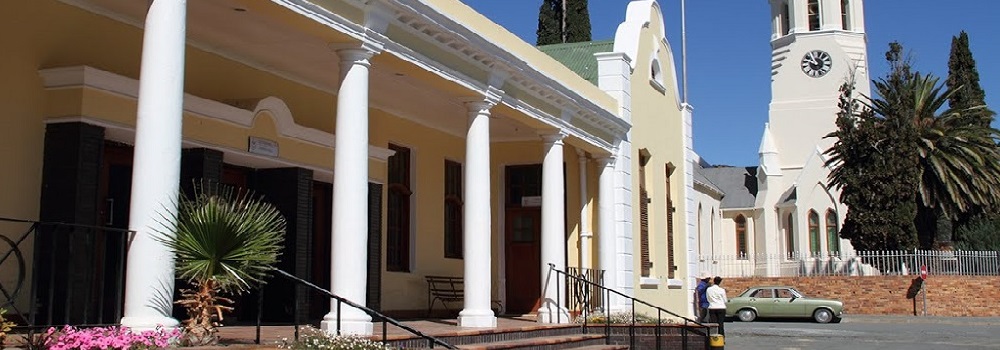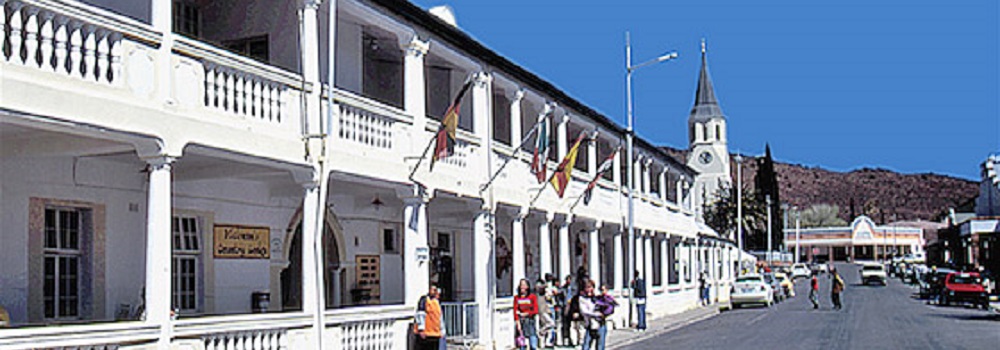Loxton
- Details
- Category: Towns
- Published: Wednesday, 15 April 2009 17:12
- Written by Ubuntu
- Hits: 18508
TOWNS - Loxton
Municipality: Ubuntu Local Municipality
District Municipality: Pixley Ka Seme District Municipality
Phone: 053-381-3091
Mobile: 083-384-8223
Address:
Prinsloo Str
Loxton
Phone number: 053 381 3091 / 083 384 8223
Loxton is named after AE Loxton, owner of the farm on which the town was built.
About Loxton
The shortest route from the interior to the flower fields of Namaqualand and the West Coast is along the R63 past Loxton.
Whichever direction you approach the town from, the roads will be blissfully quiet and afford you those long views over sweeping plains. Whether you’re passing through the Karoo, or spending time here, don’t allow yourself to fall into a daze as you drive its quiet roads, for there is much to be seen, even from a speeding car.
Jackal Buzzards and Pale Chanting Goshawks gaze imperiously down from telephone poles and pretty koppies wink from the horizon. Meerkats stand sentinel on bushes and road verges in the cooler hours, and the ubiquitous springbok shimmer in the heat haze.
Then, suddenly the village of Loxton is there. A tranquil, arboreal Karoo village. One of those wee settlements that speaks of silence, sunsets and stars, set in a landscape that offers natural beauty year-round, with each season bringing something special…perhaps snow in winter, definitely lush green growth in spring and summer…. Come springtime, and the streets that are lined with pear trees burst into snowy blossom transforming surroundings into a fairytale picture. This is one of the prettiest villages in the Karoo.
Okay, so we’re biased, but this statement has its foundation in hundreds of opinions rather than just ours. On a Sunday morning, all you’ll hear is the creaking of a wind pump, the gentle coo-cooing of a Laughing Dove, and church bells. Then silence, and if it’s summer, the buzz of insects on the hot air. Spend a few days, experience the pleasures of Karoo living, and discover why Lawrence Green called this ‘the land of the stoep’.
Loxton is one of those pretty Karoo villages that has streets lined with trees, some of which are over 100 years, and the odd donkey cart clip-clopping down the road. In spring, the town turns into a fairytale picture when pear trees are covered with snowy blossoms.
We are also privileged to still enjoy the traditional "leiwater" (flood irrigation) system, whereby water from the town's fountain bubbles along channels into residents gardens. This is a crime-free hamlet surrounded by typical Karoo plains that offer that much sought-after commodity....space. To reach Loxton from the N1 at Beaufort West, you will need to travel 120km on a gravel road; alternatively, we lie on the tarred R63 road that runs from Kimberley to the West Coast. Our neighbouring towns are Victoria West and Carnarvon. Come and experience Karoo tranquillity.......
Attractions
There are a few points of interest, but to reiterate, a visit to Loxton should be more about just being there. This is one of those few gems that has almost no shops, and is so small that you can easily explore the entire town on foot in an hour’s leisurely stroll.
Take the time at sunset to walk up the hill overlooking the town for wonderful views across the plains to the horizon. This gives a good perspective of the space that surrounds this type of small Karoo town, and in Loxton’s case, why it’s called an arboreal village. In winter, many trees are bare, but in spring and summer only the spire of the lovely sandstone church peeks out of the comforting green shawl that hangs over the town. The far-seeing townsfolk decided to plant trees along the streets in 1900 when the church, school, and first houses were completed.
Today many of the streets are still lined with these cypresses, pepper trees, and beefwoods, as well as irrigation furrows that are in use by residents to flood irrigate (leiwater) their gardens. Crystal clear water bubbles along channels from the town’s fountain, and over holidays one can spot children floating paper boats in them. If irrigation is of interest, take a look at the old hand pump on the eastern side of Church Street. It is situated on what was once the old transport route where it was used to water the horses and people alike, and dates back to when the dam was built around 1912.
The fountain’s water was relayed from the dam wall to the town via wooden pipes; a portion of today’s pipeline still consists of these original wooden pipes. One of the town’s greatest assets is its buildings. After years of standing empty, most buildings have been restored and the town is enjoying a slow but steady revival. Many houses, now over one hundred years, remain and are good examples of typical vernacular Karoo architecture.
There’s a stone building dated 1900 that was the original jail, and a tiny hoëstoep-huisie (translates to the ‘high verandah house’) that looks like doll’s house compared to the buildings around it. The best Victorian-styled house can be seen on Church Square across the road from the farmer’s co-op, and “Die kothuisie” in Church street, with it’s broekie-lace (wooden fretwork), is the only one from a group of similar houses that remained after the devastating flood in 1961.
Different styles of corrugated iron roofs can be seen, including ogee, bullnose, and concave, along with diamond windows on end walls, pedimented parapets, classical pillars, and balustrades with balusters. Some of the old buildings have wooden shutters and sash windows, although sadly, metal windows replaced many of the latter.
The Loxton area has Corbelled Houses unique dome-shaped stone dwellings that occur only between here, Fraserburg, Williston, and Carnarvon. They were skilfully built from 1811 onwards by the early trekboers (migratory farmers) out of local stone due to the lack of other building materials, and have no supporting roof beams. Many of these are still in good condition today, and can be viewed on various farms by prior arrangement.
here’s also a Replica Dutch Castle & Windmill 22km from town. It was build in the 1970’s by an eccentric rancher who’d always wanted to live in a castle. Set amongst dolerite koppies (hills) this three-storey castle, its turrets capped with inverted cones and forty-four crenellated parapets, looks more like it belongs in a fairytale, than in the Karoo.
Nearby stands a replica Dutch windmill. Viewing of this private dwelling is by appointment only, tel 053-3812 ask for 1103 or 082-809-2949. Depending on rains there can be excellent bird watching on farm dams in the area, ask your host or tourism to arrange this for you.
© 2007 Brent Naudé-Moseley
Architecture
There are some Corbel homes in the area.
Events
Loxton is the base from which the Sak River Expeditions head off into the heart of the Karoo following the course of the Sak River. These expeditions are guided full-pack hikes led by local resident, photographer/journalist/author Steve Moseley. They offer nature-lovers a rare opportunity to really get to grips with the amazing flora and fauna of the region; and range from 6-21 days for a minimum of 10 people. Don’t miss the annual Karoo Endurance Challenge held over the Easter weekend on Rietpoort farm. It’s popular for MotoX and quad bikes, but also hosts mountain bikes and 4x4’s. Contact organiser Joe van Wyk on 053-3812 ask 1802 or 072-348-7350. The town holds a mini-show on the first Saturday of December. Loxton has wonderful night skies, as does every small Karoo town, thanks to no light or air pollution. Awesome stargazing can be enjoyed, and locals have counted up to twenty satellites within two hours.
Things to do
Visit the photolibrary of the Great Karoo, Little Karoo, Kalahari, Namaqualand.
Resident photographers, Steve Moseley and his wife Brent Naudé-Moseley are launching their photolibrary later this month (June 2007). Their collection specialises in Great Karoo, Little Karoo, Kalahari, Namaqualand etc, and they have smaller collections covering other regions. Visit their website (also being launched this month): www.karooimages.co.za





